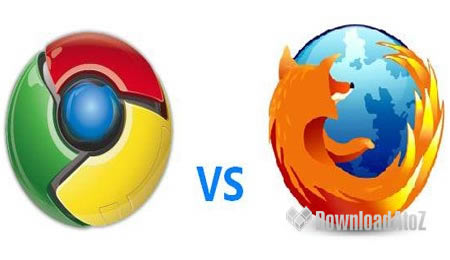The New Chrome Browser Should Steal A Lot Of Firefox Users
 With the launch of Google Chrome 9, accessing the Internet has entered a new era.
With the launch of Google Chrome 9, accessing the Internet has entered a new era.

Google Chrome Is Gaining Market Share on Firefox
Earlier this month (February 3, 2011) Google introduced a stable build to its Chrome 9 browser which had been in bata for some time now. If you are someone like me who has been sort of riding the fence between Google Chrome and Firefox, the introduction of Chrome 9 could be the tipping point in our browser preference confliction dilemma, especially considering the fact that it's seemingly taking forever for Mozilla to come up with a stable version of Firefox 4.
One of the most compelling reasons I have had in the past for continuing to use Firefox as my primary browser is because of a fantastic add-on that only Firefox supported called NoScript. I wrote about NoScript in an article on this site back in May of 2010. With NoScript installed on Firefox you can browse the Web with impunity knowing that no scripting language (Java, JavaScript, SilverLight, etc.) will every be allowed to run without your explicit permission. NoScript couldn't and still can't work on any other other browser but Firefox.
I prefer a browsing experience that doesn't allow scripts to run period unless I give them permission to do so but Google's Chrome browser approaches the problem of unwanted scripts and possibly dangerous scripts in a different fashion. It will allow the scripts to run but they cannot (or they are not supposed to) escape the browser and so cannot interact in any way with the hard drive of the PC or Mac the browser is running on. This is called running an application in a Sandbox and the application in this case is the Chrome browser. Google Chrome has been using sandboxing ever since its inception. Sandboxing is as good a way of handling malicious scripts as is a browser add-on like NoScript that works by not allowing their execution at all. Sandboxing normally works great as long as the bad guys don't find a way to hack Google's code and thus find a way to "escape" the sandbox.
During Pwn2Own, the annual computer hacking convention that runs this year from March 9 through March 11 in Vancouver, Google is offering 20,000 dollars to anyone who can hack Chrome 9 and escape the sandbox. Experts expect all of the major browsers with the exception of Chrome to be hacked the first day of the convention.
Chrome is the only browser that has never been hacked at a Pwn2Own hackers convention but with $20,000 up for grabs Pwn2Own could be very interesting this year. But regardless of whether or not someone manages to hack out of Chrome's Sandbox the news will be good for Google because even if Chrome is hacked Google will know how it was done and a patch will be in the works and maybe even implemented before the ink is dry on that 20 thousand dollar check.
The bottom line is Google Chrome, with its sandboxing technology, is probably every bit as safe and secure as Firefox running with the NoScript add-on installed. And on my the PCs I have running XP, Vista and Windows 7, Chrome is somewhat, though not dramatically, faster at loading the program itself and pages in general than Firefox.
For now Google Chrome is my primary browser. Firefox 4 will eventually be released and I'll look it and write about it here on this blog. Also the final version of Microsoft's IE 9 is due to be released within the next few weeks. I'll test that out and report on it here in this blog as well. It's wonderful to have these browsers in competition with one another, along with Apple's Safari and the Opera browser, because this competition is driving the ever increasing enhancement of our browsing experience.


 Questions? Comments? Did I get something wrong? Email me at sjh@scoroncocolo.com and I WILL get back to you.
Questions? Comments? Did I get something wrong? Email me at sjh@scoroncocolo.com and I WILL get back to you. I intend to edit it and add to it from time to time. In the meantime, if you have any ideas about how I could enhance the content of this page, please email me about it.
I intend to edit it and add to it from time to time. In the meantime, if you have any ideas about how I could enhance the content of this page, please email me about it.